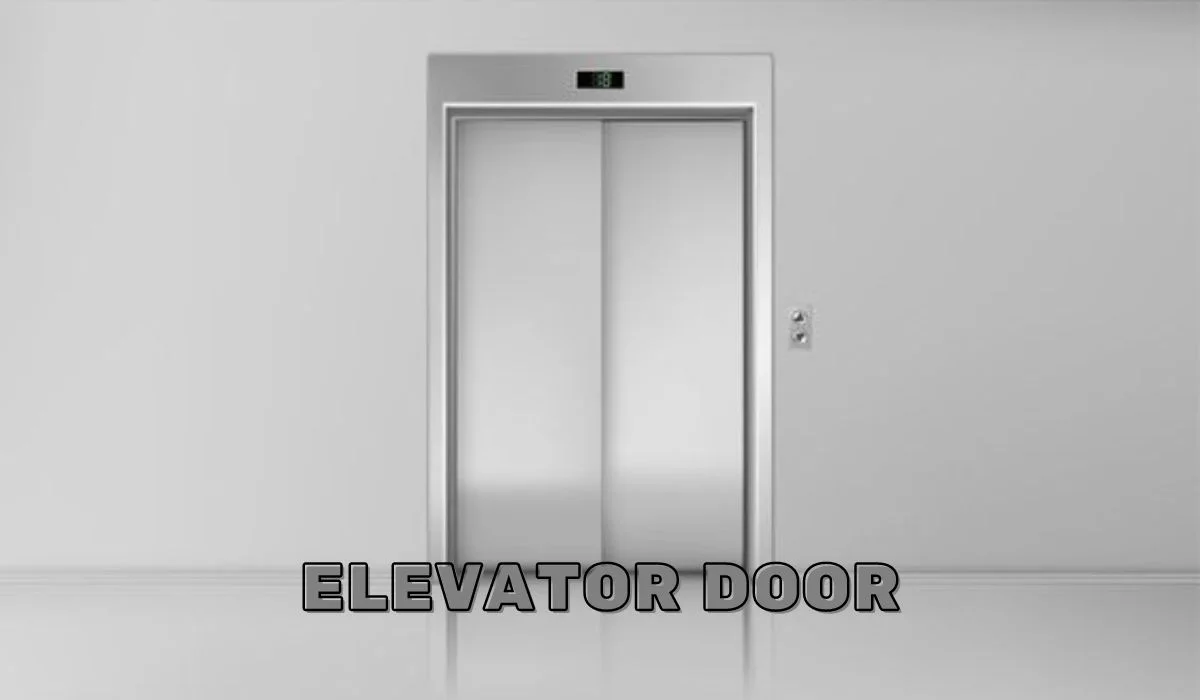Elevator doors play a crucial role in the safety, functionality, and aesthetics of modern buildings. As one of the most frequently used components in high-rise structures, elevator doors must combine reliability, security, and efficient operation. In this article, we will explore the intricacies of elevator door design, the different types, maintenance tips, and how they contribute to overall building safety and efficiency.
The Role of Elevator Doors in Modern Buildings
Elevator doors are more than just entry and exit points for passengers; they are critical safety barriers that protect users from the moving parts of the elevator. These doors ensure that the elevator only opens when the car is at the correct floor, preventing dangerous falls or accidents. Their smooth and consistent operation is essential for the seamless flow of building traffic.
Trending: Iversær : Revolutionizing Industries with Cutting-Edge Technology
Elevator Door Functionality
Elevator doors operate through a system of sensors, motors, and control panels that synchronize the door opening with the arrival of the elevator car at the correct floor. There are two sets of doors in an elevator system:
- Car doors: Attached to the elevator car and move with it between floors.
- Landing doors: Located at each floor entrance, these open when the elevator arrives.
These doors are interlocked, meaning the car doors cannot open unless the landing doors do so, ensuring the system’s safety.
Types of Elevator Doors
The design and operation of elevator doors vary based on the type of building, usage, and passenger needs. Here are the most common types of elevator doors:
1. Center-Opening Doors
Center-opening doors are among the most widely used types in commercial buildings. These doors split in the middle and open outward, offering a wide entry point for passengers. This type is popular because it balances efficiency, safety, and accessibility.
2. Side-Slide Doors
Side-slide elevator doors move horizontally to one side, usually seen in residential buildings or smaller installations. These doors are space-efficient and can be installed in compact spaces, but they may offer less clearance compared to center-opening doors.
3. Telescopic Doors
Telescopic doors consist of two or more panels that slide past each other, often used in areas where space is limited. They open and close more slowly than traditional center-opening doors but provide a neat solution for narrow elevator shafts.
4. Glass Elevator Doors
Glass elevator doors are used in high-end residential or commercial buildings where aesthetics are a priority. They offer a clear view inside the elevator shaft, creating a modern, open feel. Glass elevator doors are usually combined with advanced safety features to prevent accidents and ensure user safety.
5. Manual Elevator Doors
Some older buildings still feature manual elevator doors, which require passengers to open and close the door manually. While these are rarely used in modern systems due to safety concerns, they remain in service in certain historical or low-use buildings.
Materials Used in Elevator Door Construction
The materials used for elevator doors depend on the building’s aesthetic needs, safety standards, and environmental factors. Common materials include:
1. Steel
Steel is the most common material for elevator doors due to its strength, durability, and fire resistance. It ensures safety in high-traffic environments and offers resistance to wear and tear.
You Might Also Like: 3cr13 Steel : Composition, Properties, and Applications
2. Aluminum
Aluminum doors provide a lighter, more cost-effective alternative to steel. Although not as durable as steel, aluminum is resistant to rust and corrosion, making it a good option for humid environments.
3. Glass
Glass elevator doors, often used in scenic elevators, require special safety considerations such as laminated or tempered glass to prevent breakage. While they add aesthetic appeal, glass doors need regular maintenance to ensure their durability and cleanliness.
4. Wood
Wooden elevator doors are rare but can be found in older or historical buildings where they complement the architectural style. Modern wood doors are typically reinforced with metal or composite materials to improve safety and fire resistance.
Elevator Door Safety Features
The safety of elevator doors is paramount, as they are the primary protective barrier between the passenger and the elevator shaft. Modern elevator doors are equipped with numerous safety features:
1. Door Sensors
Modern elevator doors are fitted with optical or infrared sensors that detect the presence of objects or people. These sensors prevent the doors from closing if something is obstructing the doorway, minimizing the risk of injury.
2. Interlocking System
The interlocking system ensures that the elevator car door and landing door open and close simultaneously. This system prevents passengers from accessing the elevator shaft when the car is not present.
3. Emergency Release Mechanism
In the event of a power outage or malfunction, elevator doors are equipped with an emergency release mechanism. This feature allows for manual opening of the doors to evacuate passengers safely.
4. Fire-Rated Doors
Manufacturers fire-rate many elevator doors to prevent the spread of flames in the event of a fire. These doors can withstand high temperatures and block smoke, ensuring that elevators remain a safe zone during an emergency.
The Importance of Regular Maintenance
You must regularly maintain elevator doors, one of the most frequently used components of any building’s elevator system, to ensure their continued operation and safety. Neglecting elevator door maintenance can lead to malfunctions, resulting in safety hazards and costly repairs.
Key Maintenance Tips:
- Lubrication of Moving Parts: Regular lubrication reduces wear and tear on the door components, preventing premature failure.
- Alignment Checks: Misaligned doors can cause the elevator to malfunction. Routine checks ensure the doors open and close smoothly.
- Sensor Calibration: You must regularly calibrate the sensors that detect passengers or obstacles to maintain optimal performance.
- Interlock Testing: Regular testing of the interlocking system ensures that both car and landing doors open and close properly.
- Cleaning Tracks and Guides: Debris in the door tracks can prevent smooth operation, so it is important to keep these areas clean and free of obstruction.
Innovations in Elevator Door Technology
Advancements in elevator technology have significantly improved the design and function of elevator doors. These innovations focus on increasing safety, energy efficiency, and user convenience.
1. Touchless Operation
In response to the COVID-19 pandemic, touchless elevator door technologies have gained popularity. Using sensors or smartphone apps, passengers can operate elevators without having to physically touch any surfaces.
2. Smart Sensors
Smart sensors equipped in newer elevator doors detect the speed and direction of a person approaching the elevator. These sensors can hold the doors open longer for individuals moving slowly or close them quickly when traffic is low, improving efficiency.
3. Energy-Efficient Designs
Energy-efficient elevator doors help reduce power consumption by utilizing lightweight materials, energy-saving motors, and advanced control systems that minimize standby power usage.
4. Noise-Reduction Technology
For buildings that prioritize noise control, elevator door systems with noise-reduction technology are available. These systems reduce the sound of door movement, making them ideal for residential or office buildings where noise could be a disturbance.
Common Issues with Elevator Doors and How to Fix Them
Over time, even well-maintained elevator doors can experience problems. Some of the most common issues include:
1. Slow Opening and Closing
Worn-out motors, misaligned tracks, or faulty sensors may cause the doors to open or close too slowly. Regular maintenance can identify these problems early, allowing for adjustments or part replacements.
2. Door Jamming
Debris in the tracks or mechanical wear can cause a door to jam. Cleaning the tracks and lubricating the moving parts can usually resolve the issue.
3. Unusual Noises
Noisy elevator doors may indicate problems with the door tracks, rollers, or motor. Identifying the source of the noise and addressing it early prevents further damage and ensures smooth operation.
4. Sensor Malfunctions
If the sensors fail to detect obstructions, they may need recalibration or replacement. Sensor issues pose a safety risk, so you must address them immediately.
Conclusion
Elevator doors are vital for the safety and functionality of modern buildings. You must carefully maintain elevator doors, from their design and materials to advanced safety features and technological innovations, to ensure optimal performance. Regular maintenance, timely repairs, and adopting new technologies can keep elevator doors operating smoothly and safely, enhancing the overall user experience in any building.
With their critical role in ensuring passenger safety, elevator doors are not just a functional aspect of the elevator system but also a key contributor to the smooth and efficient operation of the entire building. Whether you’re a building manager or a passenger, understanding how elevator doors work and their maintenance needs can help create a safer and more reliable environment.




